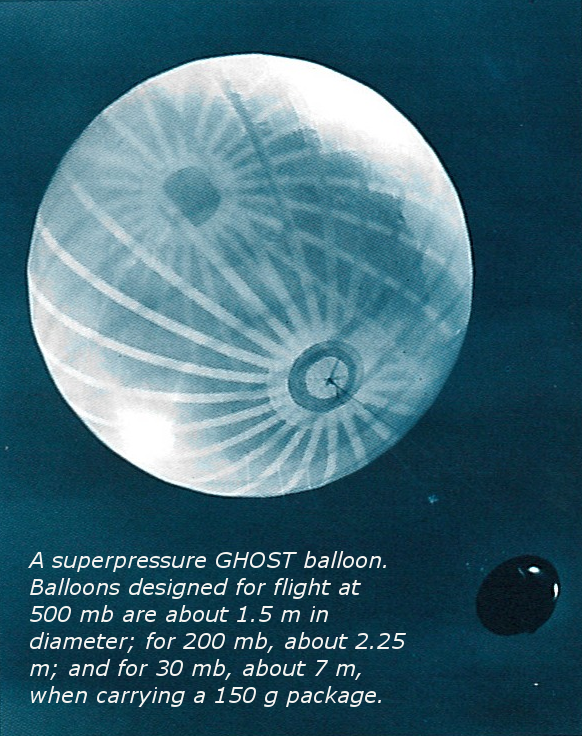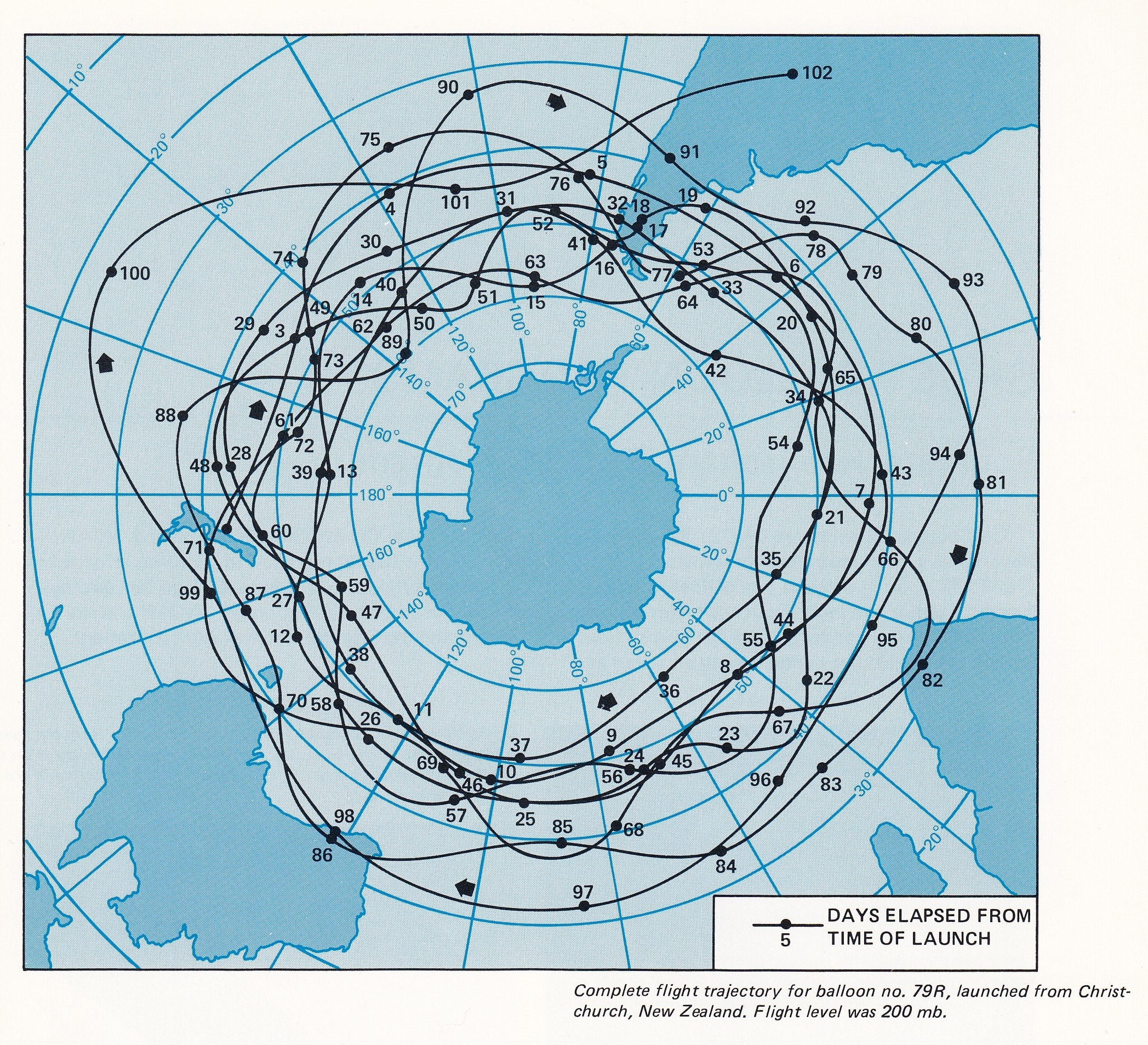GHOST Balloon
GHOST Balloon Program
 A promising technique for providing the needed global wind data was the Global HOrizontal Sounding Technique (GHOST). This technique was based on the use of strong plastic superpressure balloons to trace air circulation patterns by drifting with the wind at altitudes of constant density. Since late 1966, an NCAR team launched several hundred GHOST balloons from Christchurch, New Zealand, and several tropical stations to test their ability to remain aloft for long periods. These balloons were capable of providing temperature, altitude, and most important, wind data. The sensors on the balloon telemetered data to the orbiting satellites, and the position of the balloon was calculated from the known location of the satellites. Prior to the advent of satellites tracking, GHOST balloon tracking was accomplished by volunteer ham radio enthusiasts at ground stations located in Huancayo, Peru; Pretoria, South Africa; Port Louis, Mauritius; Melbourne, Australia, and staff at Christchurch, New Zealand. The tracking forms from each of the stations were airmailed weekly to Boulder, Colorado, where balloon position reports were derived.The Ghost Balloons had shown to fly stably at a constant density level, with maximum deviations of less than 100 meters. Balloons flying at 100 mb and higher were able to remain aloft for many months, and some had been flown for over a year. The longest duration was 744 days at the 100 mb level (63 circumnavigations of the southern hemisphere). Balloons at lower altitudes (200, 300, and 500 mb) suffered in varying degrees from ice or frost accumulation, which limited flight durations to months, weeks, or even a few days, respectively.
A promising technique for providing the needed global wind data was the Global HOrizontal Sounding Technique (GHOST). This technique was based on the use of strong plastic superpressure balloons to trace air circulation patterns by drifting with the wind at altitudes of constant density. Since late 1966, an NCAR team launched several hundred GHOST balloons from Christchurch, New Zealand, and several tropical stations to test their ability to remain aloft for long periods. These balloons were capable of providing temperature, altitude, and most important, wind data. The sensors on the balloon telemetered data to the orbiting satellites, and the position of the balloon was calculated from the known location of the satellites. Prior to the advent of satellites tracking, GHOST balloon tracking was accomplished by volunteer ham radio enthusiasts at ground stations located in Huancayo, Peru; Pretoria, South Africa; Port Louis, Mauritius; Melbourne, Australia, and staff at Christchurch, New Zealand. The tracking forms from each of the stations were airmailed weekly to Boulder, Colorado, where balloon position reports were derived.The Ghost Balloons had shown to fly stably at a constant density level, with maximum deviations of less than 100 meters. Balloons flying at 100 mb and higher were able to remain aloft for many months, and some had been flown for over a year. The longest duration was 744 days at the 100 mb level (63 circumnavigations of the southern hemisphere). Balloons at lower altitudes (200, 300, and 500 mb) suffered in varying degrees from ice or frost accumulation, which limited flight durations to months, weeks, or even a few days, respectively.
SAMPLE FLIGHT TRAJECTORY
More information regarding the GHOST Balloon program can be found in the PDF linked below:
- EOL Archive NCAR/EOL/DMS
